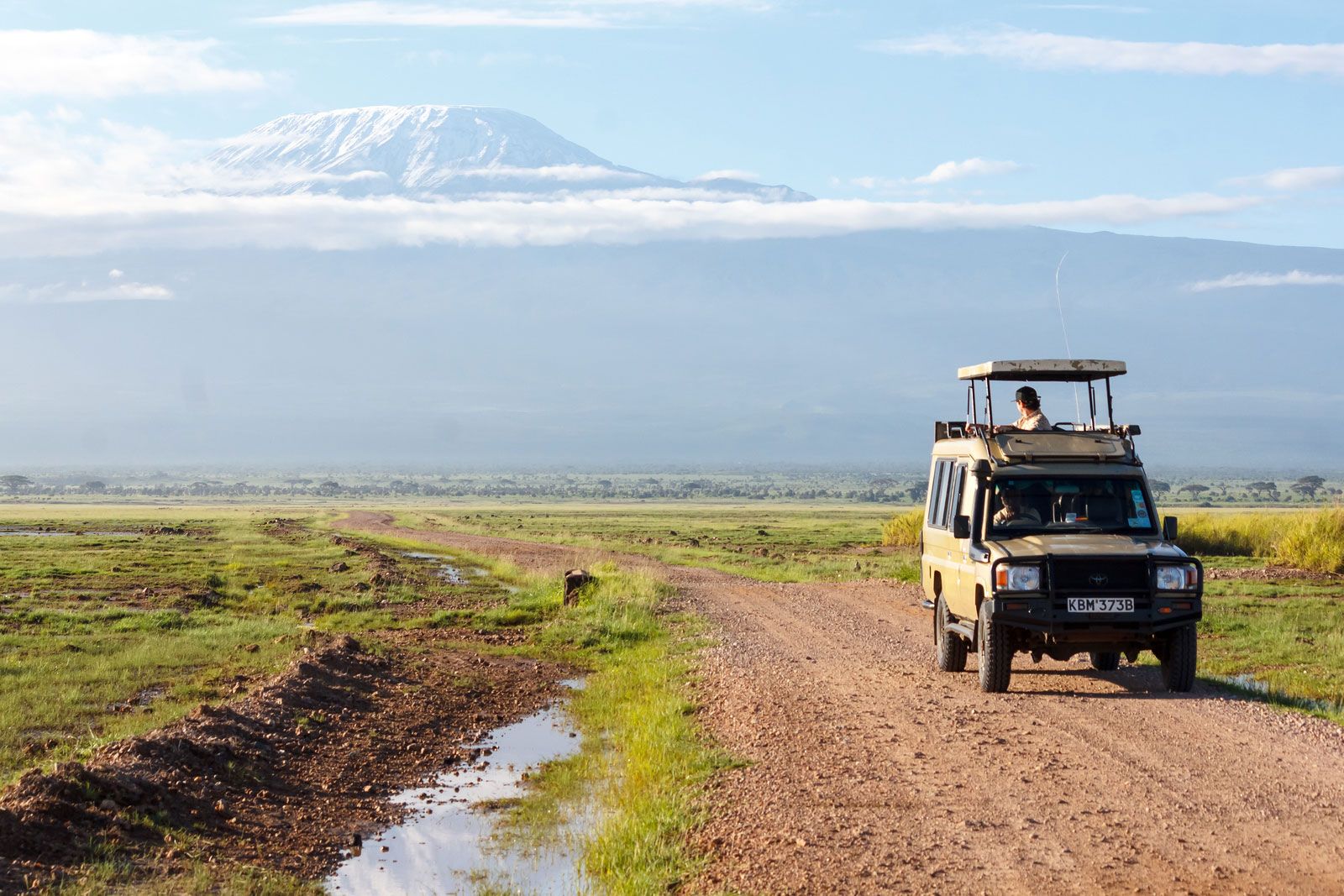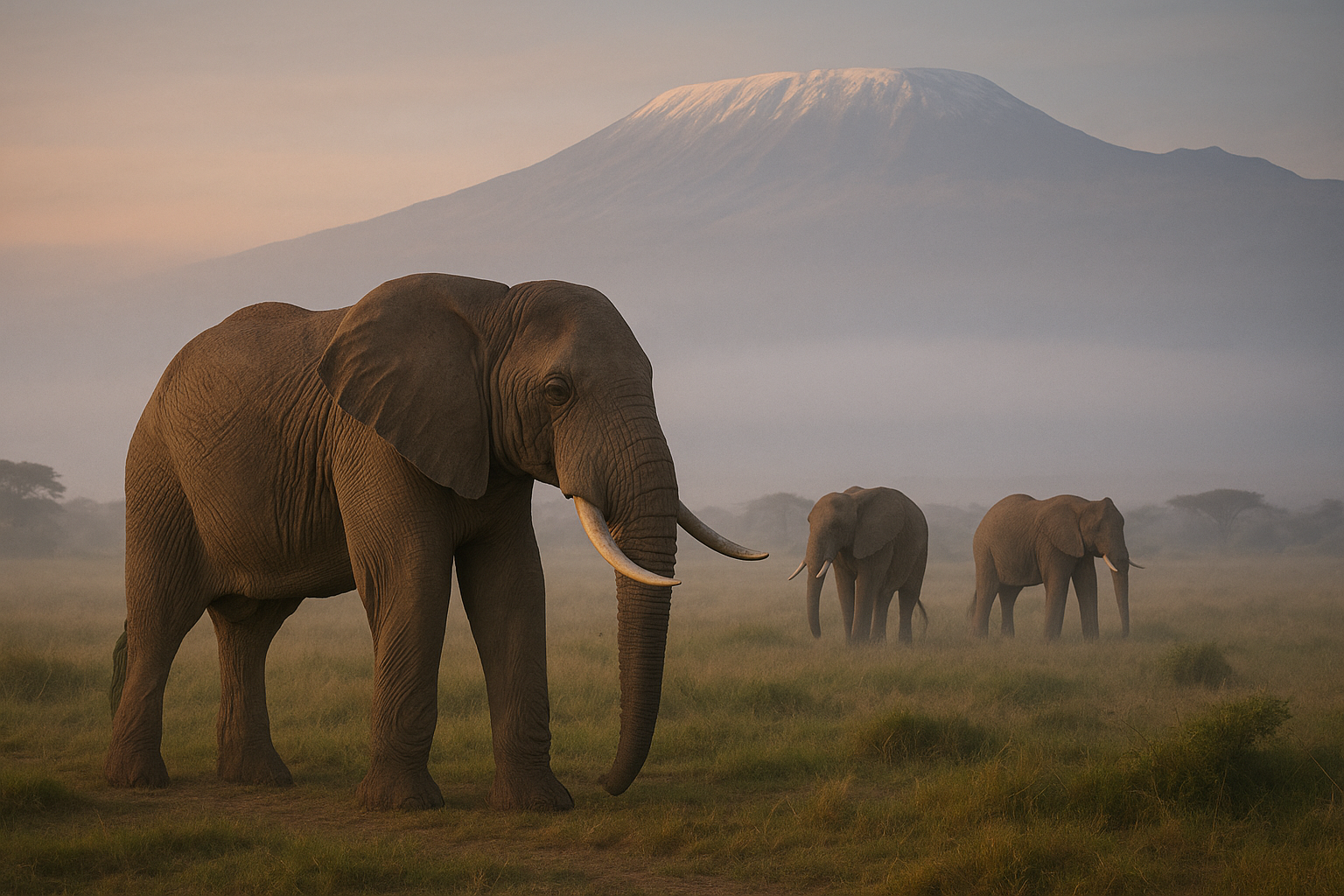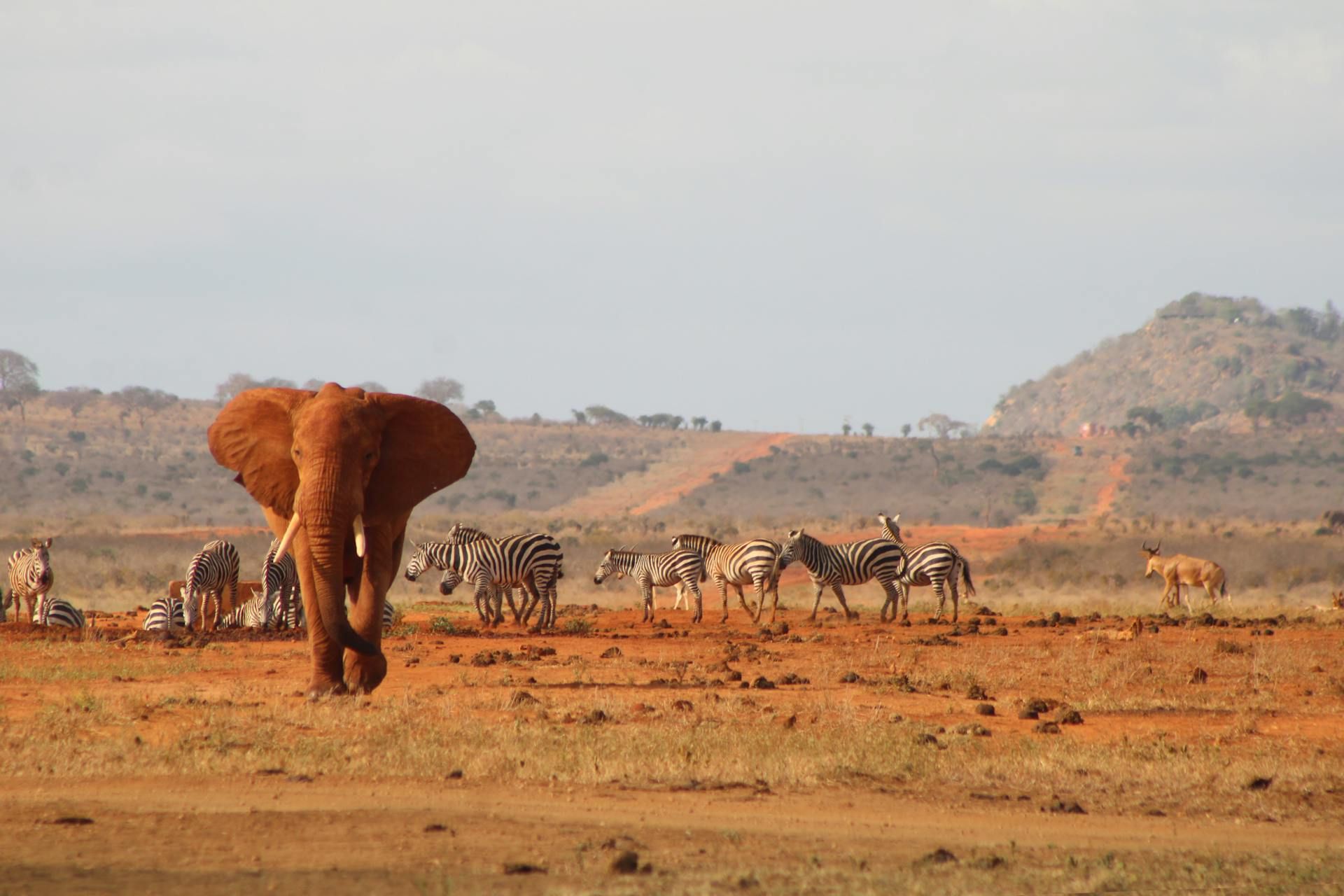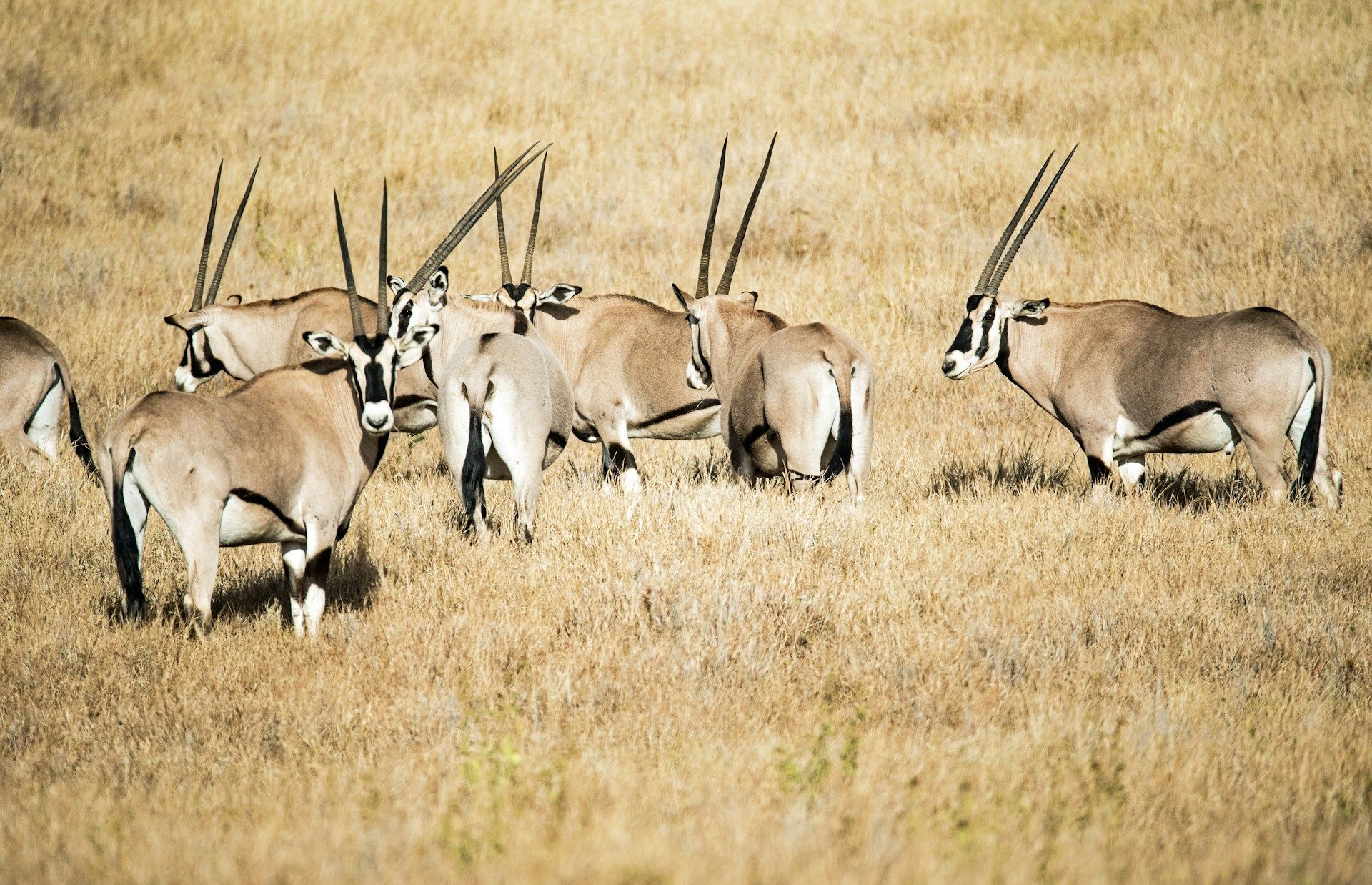
The Ultimate Guide to Kenya's Best Safari Parks: Where Wildlife Dreams Come True
2 min readKenya stands as one of Africa's premier safari destinations, offering visitors the chance to witness some of the world's most spectacular wildlife in their natural habitat. From the legendary Great Migration to intimate encounters with endangered species, Kenya's national parks and reserves provide unforgettable experiences that will leave you with memories to last a lifetime. Here's your comprehensive guide to the four most iconic safari destinations in Kenya.
Kenya's best safari parks
- 1. Maasai Mara National Reserve: The Crown Jewel of African Safaris
- What Makes Maasai Mara Special
- Wildlife Highlights
- When to Visit
- Cultural Experiences
- 2. Amboseli National Park: Land of Giants Beneath Kilimanjaro
- The Elephant Paradise
- Diverse Landscapes and Wildlife
- Photography Paradise
- Best Time to Visit
- 3. Tsavo National Parks: Kenya's Wilderness Giants
- Tsavo East: The Theatre of the Wild
- Tsavo West: Mzima Springs and Volcanic Landscapes
- Wildlife and Conservation
- When to Visit
- 4. Samburu National Reserve: Jewel of the North
- The Samburu Special Five
- Unique Landscape and Ecology
- Wildlife Diversity
- Cultural Heritage
- Best Time to Visit
- Planning Your Kenyan Safari Adventure
- Choosing Your Parks
- Accommodation Options
- Transportation
- What to Pack
- Conservation and Responsible Tourism
- Frequently Asked Questions About Kenya Safari Parks
- Conclusion

1. Maasai Mara National Reserve: The Crown Jewel of African Safaris
The Maasai Mara is arguably Kenya's most famous wildlife destination, and for good reason. This 1,510-square-kilometer reserve is home to the world-renowned Great Migration, where over two million wildebeest, zebras, and gazelles cross the Mara River in a spectacular display of nature's raw power.
What Makes Maasai Mara Special
The Maasai Mara boasts one of the highest concentrations of wildlife in Africa. The rolling grasslands provide the perfect backdrop for game viewing, with excellent visibility across the vast savanna. The reserve is part of the larger Serengeti ecosystem, ensuring year-round wildlife presence even when the migration herds have moved on.
Wildlife Highlights
The Big Five – lion, leopard, elephant, buffalo, and rhino – all call the Maasai Mara home. The reserve is particularly famous for its large lion population, with several well-known prides that have been featured in documentaries. Cheetahs are frequently spotted on the open plains, while leopards can often be found resting in the abundant acacia trees.
When to Visit
The Great Migration typically occurs between July and October, making this the peak season for visitors. However, the Maasai Mara offers excellent game viewing year-round. The dry season from June to October provides the best wildlife viewing conditions, while the wet season from November to May brings lush landscapes and fewer crowds.
Cultural Experiences
No visit to the Maasai Mara is complete without experiencing the rich culture of the Maasai people. Many lodges and camps offer visits to traditional Maasai villages, where you can learn about their customs, traditional dances, and pastoral lifestyle that has remained largely unchanged for centuries.
2. Amboseli National Park: Land of Giants Beneath Kilimanjaro

Amboseli National Park offers one of Africa's most iconic backdrops – the snow-capped peak of Mount Kilimanjaro rising majestically above the savanna. This 392-square-kilometer park is renowned for its large elephant herds and diverse ecosystems ranging from wetlands to acacia woodlands.
The Elephant Paradise
Amboseli is synonymous with elephants. The park hosts some of Kenya's largest elephant herds, and the animals here are known for their impressive tusks. The Amboseli Elephant Research Project, one of the longest-running elephant studies in the world, has been documenting these magnificent creatures since 1972, providing invaluable insights into elephant behavior and social structure.
Diverse Landscapes and Wildlife
Despite its relatively small size, Amboseli encompasses five distinct habitats: open plains, acacia woodland, rocky thornbush country, swamps, and marshland. This diversity supports an impressive variety of wildlife including lions, cheetahs, leopards, buffalos, and over 400 bird species.
The park's permanent swamps, fed by underground rivers from Kilimanjaro's melting snow, provide a year-round water source that attracts wildlife even during the driest periods. These emerald oases create stunning contrasts against the dusty plains and provide excellent photography opportunities.
Photography Paradise
Amboseli is considered one of the world's best locations for wildlife photography. The combination of Mount Kilimanjaro's dramatic backdrop, large elephant herds, and excellent light conditions creates perfect shooting opportunities. The park's relatively flat terrain and sparse vegetation provide excellent visibility for capturing those once-in-a-lifetime shots.
Best Time to Visit
The dry seasons from June to October and January to March offer the best game viewing as animals concentrate around water sources. However, the wet seasons bring their own rewards with lush green landscapes and excellent bird watching opportunities.

3. Tsavo National Parks: Kenya's Wilderness Giants
Tsavo, split into Tsavo East and Tsavo West, forms one of the largest wildlife conservation areas in the world, covering over 22,000 square kilometers. Together, these parks offer a true wilderness experience with diverse landscapes and unique wildlife encounters.
Tsavo East: The Theatre of the Wild
Tsavo East, the larger of the two parks, is characterized by vast semi-arid plains, the meandering Galana River, and the famous red elephants. These elephants appear red due to the iron-rich soil they use for dust bathing, creating a distinctive and memorable sight.
The park is famous for the Yatta Plateau, one of the world's longest lava flows, and the Lugard Falls, where the Galana River rushes through a series of colorful rock formations. Wildlife viewing is excellent along the Galana River, where animals come to drink, especially during the dry season.
Tsavo West: Mzima Springs and Volcanic Landscapes
Tsavo West offers more varied topography with volcanic hills, rocky outcrops, and the crystal-clear Mzima Springs. The springs produce 50 million gallons of fresh water daily, creating an oasis that attracts hippos, crocodiles, and numerous bird species. An underwater viewing chamber allows visitors to observe hippos and fish in their aquatic environment.
The park's volcanic landscape includes the Chyulu Hills and the dramatic Roaring Rocks, offering spectacular viewpoints across the vast wilderness. The Shetani Lava Flow provides evidence of relatively recent volcanic activity, creating an otherworldly landscape.
Wildlife and Conservation
Both Tsavo parks are crucial for elephant conservation, hosting one of Kenya's largest elephant populations. The parks also support significant populations of lions, leopards, buffalos, and rhinos. Tsavo is particularly important for black rhino conservation, with both parks participating in rhino breeding and translocation programs.
When to Visit
The dry seasons from June to October and December to March offer the best wildlife viewing conditions. During these periods, vegetation is sparse, making animals easier to spot, and wildlife concentrates around permanent water sources.
4. Samburu National Reserve: Jewel of the North

Samburu National Reserve, located in Kenya's arid north, offers a completely different safari experience from the more famous southern parks. This 165-square-kilometer reserve, bisected by the life-giving Ewaso Ng'iro River, is home to unique species found nowhere else in Kenya.
The Samburu Special Five
Samburu is famous for its "Special Five" – unique species adapted to the arid environment that aren't found in other Kenyan parks. These include the reticulated giraffe with its distinctive geometric patterns, the Grevy's zebra with its narrow stripes and large ears, the long-necked gerenuk antelope, the Beisa oryx with its straight horns, and the blue-legged Somali ostrich.
Unique Landscape and Ecology
The reserve's landscape is dramatically different from Kenya's other major parks. Doum palms line the riverbanks, while the surrounding area is characterized by thornbush and scattered acacia trees. The contrast between the lush riverine vegetation and the arid surroundings creates a unique and beautiful ecosystem.
Wildlife Diversity
Despite its arid environment, Samburu supports an impressive variety of wildlife. Large elephant herds frequent the river, while lions and leopards are regularly spotted. The reserve is also excellent for bird watching, with over 450 species recorded, including many that are endemic to the arid regions of northern Kenya.
Cultural Heritage
The Samburu people, closely related to the Maasai, have lived in this region for centuries. Their colorful traditional dress and rich cultural traditions add another dimension to the safari experience. Many lodges offer cultural visits where guests can learn about traditional Samburu lifestyle and customs.
Best Time to Visit
Samburu can be visited year-round, but the dry seasons from June to October and December to March offer the best game viewing. During these periods, animals concentrate along the Ewaso Ng'iro River, making wildlife spotting easier and more predictable.
Planning Your Kenyan Safari Adventure
Choosing Your Parks
Each of these parks offers unique experiences, and many visitors choose to combine multiple destinations for a comprehensive safari experience. A typical Kenya safari might include:
- Classic Circuit: Maasai Mara and Amboseli for first-time visitors
- Northern Adventure: Samburu combined with other northern reserves
- Wilderness Experience: Tsavo East and West for those seeking vast, untouched landscapes
- Complete Kenya: All four parks for the ultimate wildlife experience
Accommodation Options
Kenya offers accommodation for every budget and preference, from luxury tented camps and lodges to budget-friendly campsites. Many properties offer all-inclusive packages including meals, game drives, and airport transfers.
Transportation
Most visitors fly into Nairobi's Jomo Kenyatta International Airport. From there, you can take scheduled flights to airstrips near each park, drive (with a 4WD vehicle), or join organized safari tours.
What to Pack
Essential items include lightweight, neutral-colored clothing, a wide-brimmed hat, sunscreen, binoculars, camera with extra batteries and memory cards, and any necessary medications. Most lodges provide laundry services, so you can pack light.
Conservation and Responsible Tourism
Kenya's parks face ongoing conservation challenges including human-wildlife conflict, poaching, and climate change. By choosing responsible tour operators and lodges that contribute to conservation efforts and local communities, visitors can help ensure these incredible ecosystems are preserved for future generations.
Many parks and conservancies work closely with local communities, providing employment opportunities and sharing tourism revenues. This community-based conservation model helps ensure that wildlife conservation benefits local people, creating incentives for protection rather than exploitation.
Frequently Asked Questions About Kenya Safari Parks
Conclusion
Kenya's safari parks offer some of the world's most spectacular wildlife experiences. Whether you're watching the Great Migration thunder across the Maasai Mara, photographing elephants against Kilimanjaro's backdrop in Amboseli, exploring the vast wilderness of Tsavo, or discovering unique species in Samburu, each park provides unforgettable encounters with Africa's incredible wildlife.
The key to a successful Kenyan safari is choosing the right combination of parks for your interests, traveling at the optimal time, and selecting responsible operators who contribute to conservation efforts. With proper planning, your Kenyan safari will be an adventure of a lifetime, filled with moments that will forever change your perspective on the natural world.
Start planning your Kenyan safari adventure today, and prepare to be amazed by one of the world's last great wilderness areas where wildlife still roams free across vast, unspoiled landscapes.